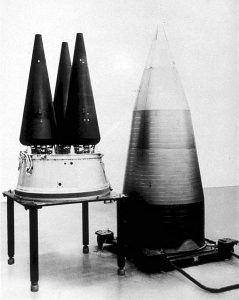
The study in question came about because Marylia Kelley, of Tri-Valley CARES, and NukeWatch’s Director, Jay Coghlan, suggested to congressional staff that it be done. But they wanted to ask independent scientists (the JASONs) to do it – instead just NNSA did it. And NNSA dodged the central congressional requirement to compare the benefits and costs of the Interoperable Warhead vs a “conventional” life extension program for the Air Force’s W78 ICBM warhead. NNSA simply said a conventional life extension program would not meet military requirements and therefore summarily dismissed it (no further explanation). Marylia and Jay had the opportunity to discuss this with the relevant congressional staffer who said this ain’t over.
Note that the Interoperable Warhead (IW) is DEAD. This is important because NNSA made 3 different types of Interoperable warheads the centerpiece of its “3+2 plan” (3 IWs for ballistic missiles and 2 air-delivered nuclear weapons) to transform the nuclear weapons stockpile and its supporting research and production complex. So IW is dead and NNSA is now moving on to its next bright, shiny object, a W87-1 replacement for the Air Force’s W78 ICBM warhead. Which, BTW, is fundamentally the same design as the “Reliable Replacement Warhead” we defeated in 2008 and now the Interoperable Warhead (and the Navy doesn’t want anything to do with all three, which is the crucial reason why “interoperable” between Air Force and Navy is dead).
Not reported in this story is the fact that the NNSA study says that it wants to put newly manufactured plutonium pits in the W87-1, but if for some reason it can’t it will put new pits into the next (unspecified and unnamed) life extension program. My point here is that NNSA has yet to offer a concrete explanation and rationale for expanded pit production, which by NNSA’s own low ball cost estimate will cost $43 billion over 50 years.
Finally, radically changed designs such as the W87-1 may undermine confidence in stockpile reliability, and therefore could push the U.S. back into testing.
Jay is convinced we can defeat the W87-1 as currently proposed. After all, we have defeated its predecessors, the Reliable Replacement Warhead and the Interoperable Warhead.
Read the Study: W78 Replacement Program (W87-1): Cost Estimates and Use of Insensitive High Explosives Report to Congress December 2018
